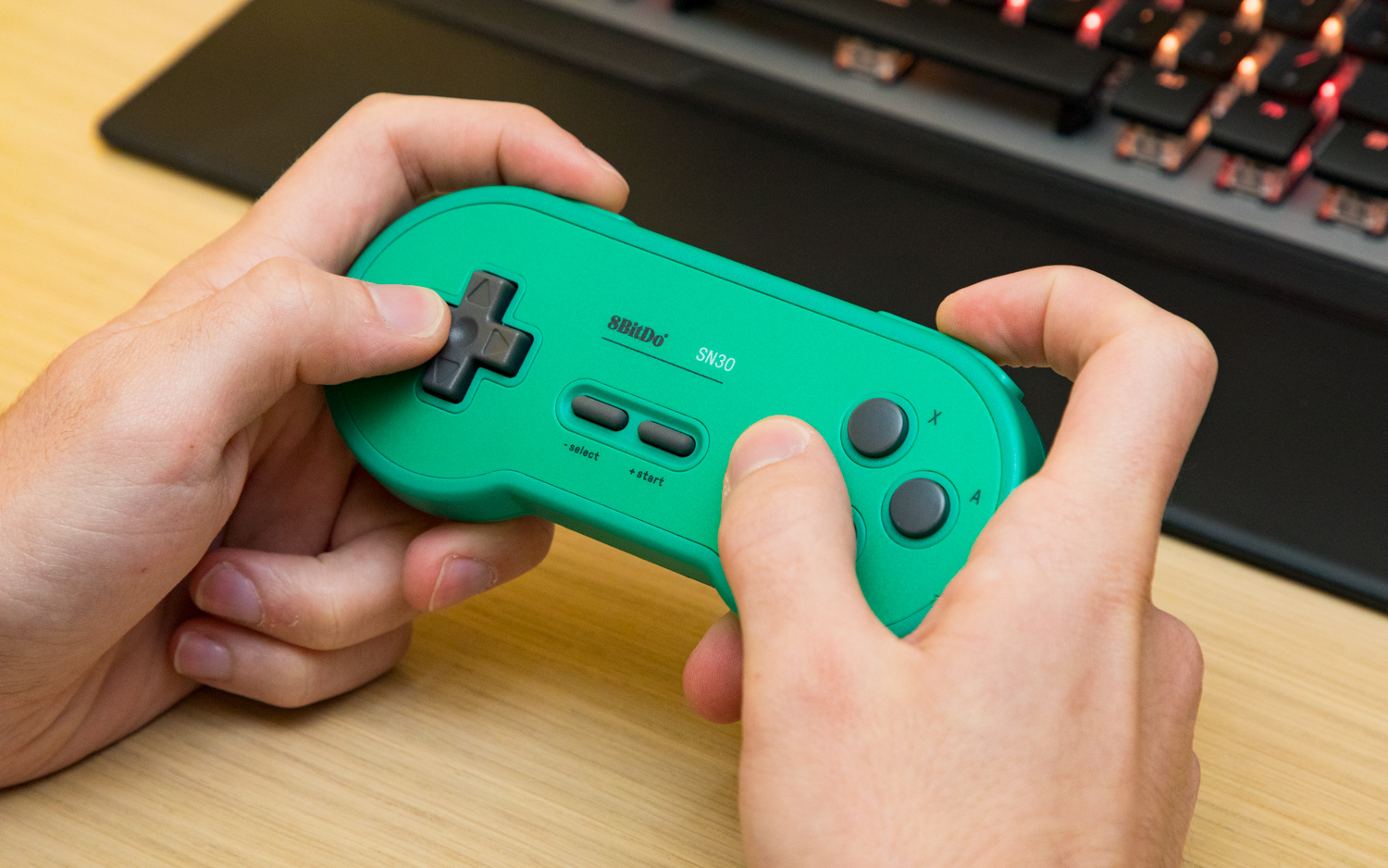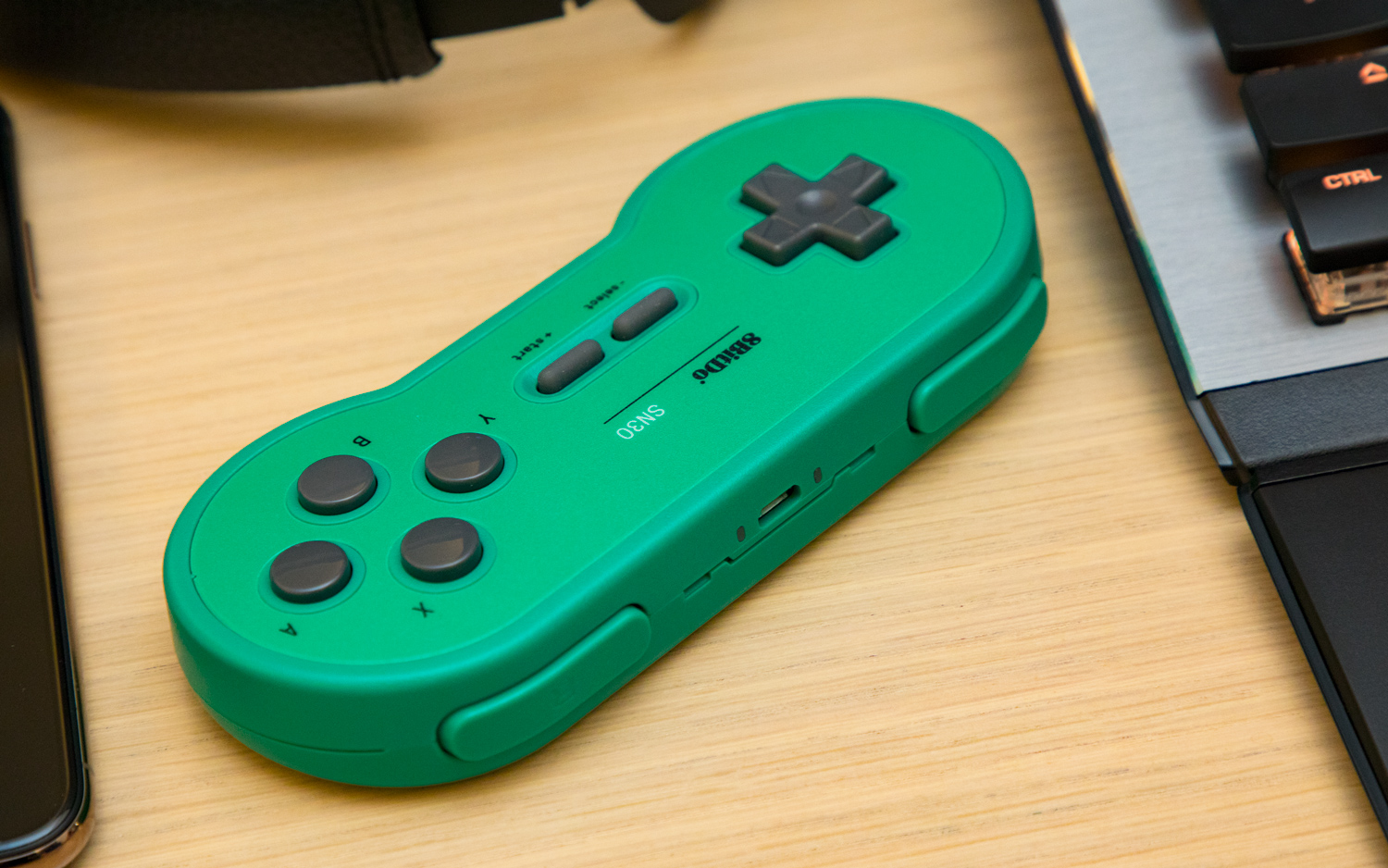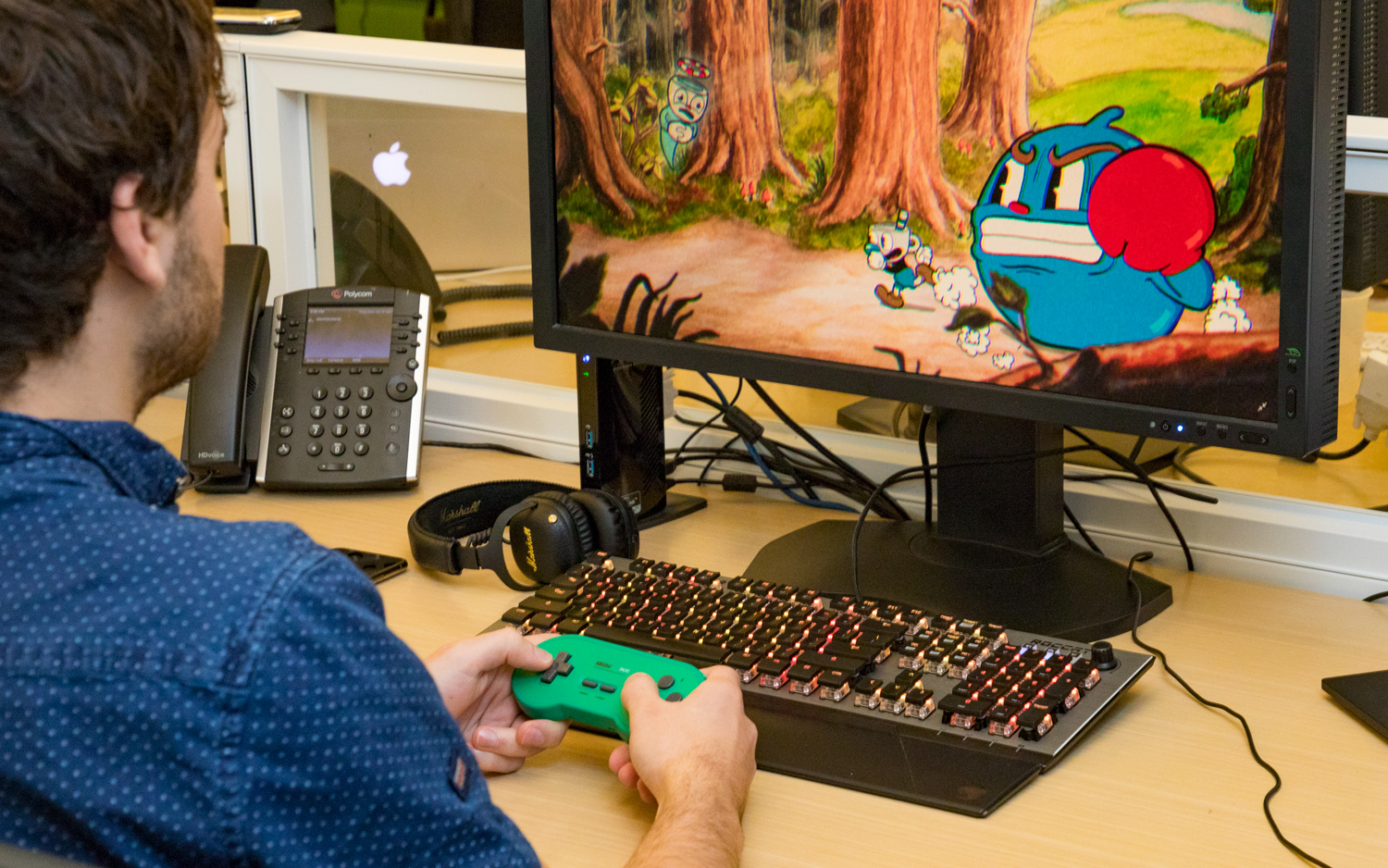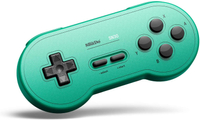8BitDo SN30 Review: Skip Nintendo's NES Pad and Buy This Instead
The SN30 continues its reign as the gold standard of retro pads. And now, with new, delicious Game Boy Pocket-inspired colors, the controllers look as good as they feel.
Sure, the world is far from perfect. But things aren't so bad today. For example, you can buy a near-perfect replica of an SNES controller for $30, with Bluetooth support for almost every platform under the sun.

8BitDo's SN30 controller has been around a for a few years now. Back when it launched, it was designed to look as similar to the original pad as possible. Customers could opt for a purple-and-gray, SNES-styled version or a rainbow-themed variant that emulated the Super Famicom scheme. 8BitDo even made the X and Y buttons concave on the former, while keeping all the buttons convex on the latter, to match the originals.
Now, 8BitDo is rolling out a selection of new colors inspired by the Game Boy Pocket. The new controllers are functionally the same as the SN30 pad of old, but now they come in an assortment of hues that pay homage to one of the best designs the Game Boy ever saw. And just for good measure, there's an off-white/grape model for fans of the chunkier, original Game Boy.
We at Tom's Guide got the chance to go hands on with the new models, and we can confirm that they feel pretty much just as good as the company's previous offerings. That is to say that they're as perfect a replica of an SNES pad as you're going to find in 2018 — save, of course, for the one that comes with the SNES Classic.
Just like you remember
The buttons and D-pad on the SN30 are ever-so-slightly clickier than those on the SNES original, though I doubt many people will notice a difference. In fact, those who find the real thing a little too mushy might appreciate the bit of added feedback. Everything feels tight and precise, without mounting so much resistance as to make it difficult to rock back and forth directionally.
Shoulder buttons are anchored at their inner points, which means the outer edges are easy to press and hinge exactly the way you'd expect them to. And, as always with 8BitDo's products, the build quality is exceptional for the price and the plastic is spot on.

I took my green SN30 for a spin in Yoshi's Island, where I flung eggs at my adversaries with just as much glee as I ever had on the original hardware. Tom's Guide's resident fighter, Mike Andronico, said he felt right at home brawling and scrapping his way through Capcom's Beat 'Em Up Bundle on the SN30, and he dug the minimalist look that 8BitDo chose for this line.
Pretty and pretty clever
Speaking of which, yeah — these controllers look really, really good. 8BitDo went through a bit of a re-branding over the summer, and the new pads sport the updated logo and a classy monospace font. They also come in Pro variants, which contain bumpers and sticks, for an extra $15. (There's now a blockier N30 model for NES fans, too, which goes for $25.)
I suspect that 8BitDo picked up a few design pointers from its friends at Analogue, makers of the Super Nt. As it turns out, Analogue founder Chris Taber also serves as CMO of 8BitDo.
"As always with 8BitDo's products, the build quality is exceptional for the price and the plastic feels right."
In terms of compatibility, once again the SN30 is built to work with Windows, macOS, Android and, most notably, the Switch. The controller supports X-input and D-input, and some users have successfully gotten the SN30 to work on PS4 through Mac mode. 8BitDo offers receivers that will allow you to use all the company's controllers with the NES Classic and SNES Classic, as well as the original versions of those consoles.
Pairing the SN30 to my SNES Classic (via 8BitDo’s Bluetooth Receiver), Mac and Switch was equally easy for each platform. The directions clearly outline the steps for each one. There's a micro USB port up top for charging and firmware updates, and while it isn't of the USB Type-C variety that the Pro models employ, it still gets the job done.

I once had to update the firmware on both my Retro Receiver and an older model of the SN30 to enable the pad's X and Y buttons on my SNES Classic. (The system was reading my controller as an NES pad.) I expected the worst, but the update actually fixed the issue and didn't take long to install either.
Purists may bemoan a couple of stylistic changes that 8BitDo included on these models. The Start and Select buttons aren't angled like they were on Nintendo's original design, and all the face buttons are now convex.
Those are nitpicks, but the only serious complaint — particularly for Switch usage — pertains to the lack of ZL and ZR buttons. The SN30 Pro includes them, but the SN30 doesn't. Of course, additional inputs would compromise the design, but without ways to access functions mapped to those buttons, you can't exit NES Online titles.
Perhaps 8BitDo can update the SN30's firmware to allow those capabilities. In a similar way, the company previously built a shortcut for the SNES Classic's home screen, in which you press Down and Select simultaneously.
Bottom Line
With refinement after refinement, the SN30 continues its reign as the gold standard of retro pads. And now, with those delicious Pocket-inspired colors, the controllers look as good as they feel. Those on the hunt for controllers to play simpler games or 2D classics owe it to themselves to give the SN30 a look.
That said, as more of a Sega fan myself, I'm starting to wish 8BitDo would give Nintendo's rivals a bit more love. As a matter of fact, Retro-Bit will soon launch Bluetooth reproductions of Genesis, Saturn and Dreamcast pads. Seems like we're gearing up for a rematch, '90s style.
Photo Credit: Shaun Lucas/Tom's Guide
Sign up to get the BEST of Tom's Guide direct to your inbox.
Get instant access to breaking news, the hottest reviews, great deals and helpful tips.
Adam Ismail is a staff writer at Jalopnik and previously worked on Tom's Guide covering smartphones, car tech and gaming. His love for all things mobile began with the original Motorola Droid; since then he’s owned a variety of Android and iOS-powered handsets, refusing to stay loyal to one platform. His work has also appeared on Digital Trends and GTPlanet. When he’s not fiddling with the latest devices, he’s at an indie pop show, recording a podcast or playing Sega Dreamcast.

